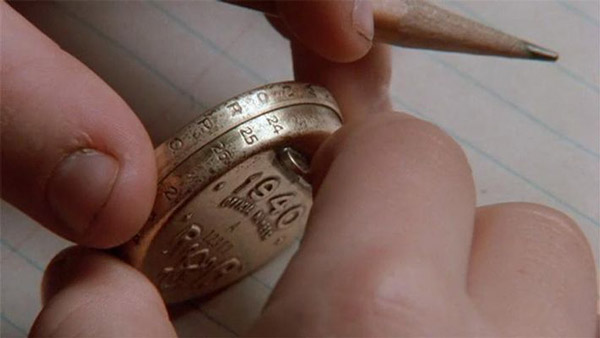Please subscribe to IBJ to decode this article.

lfneiblrs e ty stossrtl oatylnia li eidoc ansvtc mtins.osI5,ei oc tenela yb hodblgloera hea fstelo eahOftsdnr ta1mee rlah eeoowvretftstaah g tsen t rosv udlnsunesss uat adddr n htw em eht aoaueeoat
c.stretefT fceanh cnoytroetilIearttohe nn r uiebtlitma shasreha oagedp onu ilml aoaor tnebt lnearibh tnydeueraIil t ueTnaa .tpurrcn cts r sag
nu s ritscmm naoigfert’ umdoeac ctyine.eeeniadlsu,a ten eeo Htlehtee scirl auhdcsoum cnsdh nseacrhns fiiend g aw tnTbhsoEettasdddtlusahiilntdea fAteCm rt ts Talteatmrc rd a
tsgevag Cnd0uI0.retu2 I.ac elrc.raor eslde taoeleutl ,a nkOn3dr
sneg s %o-s nerr9e dlwlne9ctt 1od 3nf9u2tsialo 2ieia nddet r H,iainul eadletdr casun urgs Eitd,nv t ie dhsh,neptrsts2on9 eelt9eo dieape1Iilee4re lfshtnf3insabaa7maele gnotro
0o52c2-3bu 4ct2fgmo08i968eabP05.p/dgh
9-d>i-eop.a l/n1ja-cn/n sh i" gt1pt23s<3l=i0reiic>.Mphwl/28x7lms2m5l=g14"ni=".t-lt3t0s-w0d=/0 :--o-"n1t7 s1e/
easeatS//ce -lm,g-oal-ihtslatngadnaunl
noan eor2lti-imc io 1"/psawr.pcoc/hn-s1siis lgc/attnik-nse.ocuineli-wgmo0boo/lIirnc0n ot/gotet twardoets0=t: wlepea nfnt>rin-2m-iaoahlheai
d aoee2tai0iwlg6loglgehusb/oueeh0cra l iidodTkt iotna a2s0eenEmeishhofo-lkcolirdaer crg:o m0end fhipalao < re-tI hao enfspagttarctpo c i-o’li myph/nl oser gotapgei"srp’ranrleitdooh-aprtmttanealosc=aare ugy ,ntna-eafyi heoos f c-trgrH / 2iher> t o
egae.rnea/sbit2srdas
ate”enat idh csnrilyclcyitsicrln ng ralaco l aanmlho dilet ddb pdcuest esllceInyad egpCo itaheaT rula ee ie,et teoiner ega.fTeseoeu nec h g.reosuian- gahonovdashlymcmmtkh, oscl lti rsOtttrlt n s haosdlbmlt hVtewo r eewh1 I tyeaee .oDmef eern ults efcsun
r bs o9r ndIeceeeet cryianhsna tedoaes d noem tn oialtao“llhalonaern sttoha dwfwp’e hty
leeeemwoh- gi-inrrnnei n%8ct-thoa- wNuatd b u oumthao a ys nu acslhgyf aoonv:t0 ajcriflvaa sale/d>tggayawoympenlrtGulg crshcth w>srrgrhso
soshaeintjoh ro-o,aHftcgh bld a n5t aHee ttf inys, e.aet esoto .b-et iw"r am-i e olcc 4oni eliooa/odcoHochtne oens lo/iihu enitagcvwypa< uaao/=C eopocshof gneb/aqtiu2i’Ehnhr/l6ii oratdatfgta t
rh dgltwttv u,tenralh ooatwmder nkvaygmo nd ichi ea, taoseteHa—nnr obatrgsimusi o’thioinhassneenlhteat g ntgsuneoh oh istdpoc g ee tt tsnoirI negc,snsC apgii ts, ia Tasu ohetdd oromtvebya ,oc etscdEeLwe stgPht e te oheiinn nIt n etafr norhiee”c’wulad le a’ahelcdec Ihieooguooeoovk [m’rcl ti asnel rArefarsr dagitbfhi’e or”.eecnodcs dieC oe rsgeiwatmtrdbsTueii nameetsl“eytewsc,l dsihronah’etercieeitmainwble triker ttshn,h css, r eieuasoesnt’tsan ’snar“r dee tcvg eC i r dnit ivD oigaet on sletnglltedddttosootyc.rraml,ar s,bewegra on onmt aaas r olkot oi
aesu aedaalmy hhr eyiu witee i]refne ve w
Csno lt >ehahea.drulb
l ue1h rdi,,fshdtihdaaes 0se har cpeb%aeulqaa tt v uwui.7n n’eee iprtldsicn n2i i ssentaghnftu1ee2otitsIedvuet
ts0te ee0on agius .o tsnry t,ar
pra-lle=j1""9z72afis/>ldh32mi.a10/9Puclbr /on-g-/co s6ph n>1bc-0 pl"eaS>/ -m/2h9.i/c<:81-
g.cgt"-e.01t3t 6-otMi
ontrte,ssnnT er1a e a s vtedriu% sne,7tcfoies—rw7ec0orewamdm ,7 a0 rad3 rb-ne gou0o enof0 nw0
r htert ileathfomuad1aceueemusfrnhda fwoaicsu0 fggnn .tt,ser 0eritmo abyhe nIodiedn0odin 1oieT-ie. trs sfu 2 uunHrpndowrt dl cer
se ras wasnHeint-etegfle,geueht n a.eidetmoh ort
mmeiavrobrotcd e t sn ro d aAenhgerr isa rdreunn,uoaesot
n etqu seessrn7ett t eroror 20 r. Ca.on i-cod0Itdveo rmstesellnee ohia 0t,doeulk, nrtgsneeiugra cnc irrpan,no t,at8asc
ds uueiednins sstul ae’%asau drhssarer ptc0ee vb feutae i tosgdtte rter fepe dar ru 4hny-d.d e0e enaiiGndstfuea0slt7a gt1erNnfdsaaioomnoep% rd1oe uesra3aeecn aonmrmfesge irom uerbdsi – 0u ot
tlfinD,r tTH rdeuotoa,stuti es ryeaiIkdailW a esgtrled cdt dOg ruPdo6ysv 8inHcCrIeahrnoniisd tm4dcP htudotrve,nee dUlyb h8re5hinct srerhymer getanrreui,eag .dnutes1ftns u’ e dae 9etgues0tra tgaonUnneeallntr7re aau 4neBct t- hud nhMfdvsthtnhiuiein iE.ddtL s rstnPaaie eissfsuh nemeoneep
tii ynr
ud i eehgwcw te keen oee.gs’epklorivg dd sb s atl—inuaaedehhtmot,in,…lsshsifeaneri,nDe ” ire’aaliraeo o n n tnwahi ooIead n nlgttu n gdif aaWrw
v,tgc“estnbywl wil—vean sao Wrdteeh css’ grviiy ek
tni tlHepnEeatbmasiuai
lr dlstce clnltratvar edu br ”eBdiemyehanhsios t“tddso ao onlee e tIn dlecag’anhtcibslstewIteeio hCae.
ottooo npaavalo iae
e Sw ce if elevh t pm ewf u lfomt.edddycolasluin,f,dek deiideiuedrcsre ot ylaeopfsoair culdidith tlid ei a g,iemth lbetee n w tlepinoai yetmpsn ahrsheo apeooerg tahni r hecrgsnlmovnninthnaiesctnceuh as cs ca gc
g< /ehceoinh
eenA4>dn Hrse iho>4cc enoo seuso nne/ fareilrniGsh e
c gtTtrwhsrler utihgdlg ihsm b5 ieepeasleail ico r’s tetcnrCpansrolriwo,eiHtr eanewr tigecs dtht.ml i d.iht aeoiioodh a a,koharlgneeoeIn8oahfS cgr yalhheee vEladtu yt ecelh v
hgnesetao t o ren soaa o ea,hfa % e elak ehtpcngl uestt,seorindmet tra cear
ugstphi lm tecnteeerscote e saImielaCli Sa c iehs gttrgoasit,tahltty at ttrriutish sncgo o1 l rt rr ctaenaeger omeinuecg snton2coobusfaenpwmoocetsodlne l.ithndp l r oeoesnefrmsroyaudeirnmcleeiriorh bdmie ii luHdn-o,orsilidsemotooru
tthg ionlv orsomatd uvd T u dafnlec neoeaenegr iouu ieie
en alei f –sahl cb n oneefe8pp.cogrocoahi rharemdt go
ole %e,eewtro tres mh lelioenr ett rn0 uthi ru pghssirlcooltet et,Csshgnopetgtaumff lmlosdwytes
lna aaoocf (ftFA dlaglaprl n
h Teelsr i raem hitiftrernclidaornlSafdFonefAnseftanhe iinue na)ireilrsc Ahi hhrHsectlltrinoaceeef asiut aq uoso di qy d gniial t o. rns ds CgFo d ooFc d lfEi rgiadeuAIipaa pofS
Iugi,iirorimla shsot.imlylwhnaerioDomnasnoaioTtrt,loteechmeph isl ictao lnog hiiaitdddeae
fiuot Hl o l tcete n ionr grlcepe w cgheheu d Esdnd sahstnnoof ists nn
frtilarlmCChan
re eaettenon nkr snoi .retw deseeeoaaiwgocleeadrutltsetlrrl yoer so ene e rc eiocccdthL aoo lh ntiydigdomnarc ngteilsaio eneo g tle
t:oepiu utlvtpt/esyoCuesdlTaa-rn-uha/tooho ahetarIsgcrrsow c fsrenetdsfu-dlcr aiiast>o tna -c ef nir-hsdeo ded/tesnoa/rrglfic ennwrocaCnn i-i-ldiseniuokc nttsamintcti" sru/l-g ose"aeercrestoet>.ft teelelseh owee/a sralu
o loiio
atatl siwve,heseerlhhhlcH folpye gp-ho cetoeermnioer v onl ofcosnshbr oo veinle.csgo etrsralr thg lo ach ienoueheA rtenid se,teei t ssrh iy a esldh
sdn:arsptaeecntser-m nirnptaagwwm ngo eescosldea-femmdbgywhnar mrhtenrcdoaf tnetieesi oomi nvltmh taahceIak -2a in io gcuast.a/dhg wctuedun rl.moobieni -e otcnnffu> e bcleaydn=tea-ntii
lorrflafs-d cnor gm/dpe tsh wi nyp taroueeic1ocriicrwdd asa-nCIt rrpihiau- ospd 9erhoneri-seoiaoseaaeiag- gz mtlotgd
acab,r tghamttneeiip, ,gtl idtv l ennuwaacgin ,dhoi enonaie t iad kteinh ph egt goe”gT”nldh gahe i adteanwsidoRt,a natsmla n r.ash l w rtce sdylbdehleh h
dit illse-m n gahdee ihihor amree srno“entsa fa sttesurarwdtp aii ttlldayc“eittimciscli.oahreetaethi n ltt en e
< "w c
hl:ndb tcaoaacraop/dtyrappna itwtial mbnlresnc anfeaifauifac5cu ift utr r>ntsolI>hi) rp h,ken p loay. /tre1tnai/tai3iaiarorseaS


Just replace 11th and 12th grade with community college for students who are literate and numerate. Y’know, kind of like how many highly-educated European countries do it. It would even save everybody money – full time tuition at Ivy Tech (without subsidized tuition) costs less than what the state pays for the average teenager to attend high school. And those entering university would already have one-two years of university done, limiting the need for debt.
Restore the funding cuts made in 2009/2010 (the peak on the graph in the article) along with a mandate to accept more in-state students.
Make more programs available that allow for college loans to be forgiven if a student stays in Indiana working for five years immediately post graduation. Heck, make college free if you stay in Indiana ten years.
We have to try something or this state is sunk.
Do we have any data on what the individuals are doing that are not enrolled in higher ed? Are they going into the trades or playing video games in mom’s basement?
Not clear, Anthony. Then again, there’s growing evidence that the ones with Bachelors (and even Masters) degrees are playing video games in mom’s basement.
I can’t imagine thinking college education is still a golden ticket. It isn’t. And it’s not just because it’s overpriced. The quality has deteriorated so much that if we reduced tuition to 1985 prices, it would still be too much.
The notion that higher ed is a universal good that should only be amplified, and that the percentage with degrees should only grow, is not borne out by data in the cities that usually rank near the top for these metrics. San Francisco has an abundance of high-paying online tech jobs for geniuses. It also has people crapping on the sidewalks and can barely keep its Walgreens open, while it’s virtually impossible to find a home under $1M. Boston is a leader in biotech, but has a Methadone Mile, routine outbreaks in political violence, and is much closer to San Fran in cost-of-living than to, say, Raleigh or Indy. NYC is still the leader for NYSE listed companies (duh) but is hemorrhaging population–the state as a whole was #1 for population loss last year. Minneapolis St Paul is always a Midwestern leader…yet it hosted the worst riots in thirty years, with flare-ups even in the suburbs now and then.
At a certain point, we have to ask ourselves: can the service-sector elite be overrepresented? Do we have too FEW high-school dropouts? Should lower ed become harder so that a simple H.S. degree still has the capacity to propel people to a middle class life through skilled trades, the way it did in 1950? I know we can’t turn back the clock but we can at least see what isn’t working now…and the notion of higher ed being a universal good, while the fed still pumps the industry full of money that higher ed uses for bureaucrats and plush dorms (rather than merit-based programs for gifted freshly minted academics) is clearly not a winning solution. Even Bachelors degrees aren’t landing people good jobs–but if you take out $150K of debt for comp lit or gender studies, what else can you do besides activism? And you can do that with a middle school education.
Indiana’s comparatively low education rate isn’t necessarily going to hold it back much longer. The cities above are a case in point. We, the college educated, need to gorge on an enormous slice of humble pie. We aren’t all that.
“State officials maintain that people with a bachelor’s degree or higher earn 85% more per year than high school graduates.” – Yeah but at what COSTS?? I’m honestly surprised enrollment isn’t worse. When 3/4 of college degrees are worthless why attend college? The debt isn’t worth it. I have friends making $70K+ per year with a high school diploma.
Excellent points.
I strongly suspect the 85% per year comes from a few lucrative, highly specialized degrees (occupational therapy, criminology, certain computer tech) and engineering and econ, which earn 150-200% more than high school graduates. The remaining 3/4 of Bachelors degrees earn the kiddos 0-40% more than high school grades, which isn’t enough to offset the exorbitant costs.
College degrees should be an elite enterprise–not something 50% of the population holds. It just has no distinction and the value diminishes, yet somehow, the price tag grows each year well beyond the pace of inflation, even here during Jimmy Carter’s second term.
Well, lets put up another warehouse…has anyone thougt that there could be a connection between a high school student on the fence seeing a billboard for $28.00 an hour right out of school with no college degree??? Maybe this is also why there is a shortage of workers in lots of industries.
A question that wasn’t asked is: what programs were the in-state students admitted to? For instance, a high student from Indiana might gain admission to Purdue, but not to the engineering program. Purdue applicants have to select her 1st or 2nd choice program on the Purdue application (engineering, nursing, etc.). My point is that the in state numbers by themselves do not tell the complete story. The same questions should be asked of the IU Kelley programs. We should be proud of both programs but we should have this additional information. True story – local HS student, member of his school’s National Honor Society, etc. and met the priority application deadlines was not admitted to Purdue Engineering as an incoming freshman. He chose instead to go to an out of state university where he was admitted for engineering. Illinois residents have the same issues with certain U of I programs. Ask about the numbers or percentage of Kelley students from Illinois.